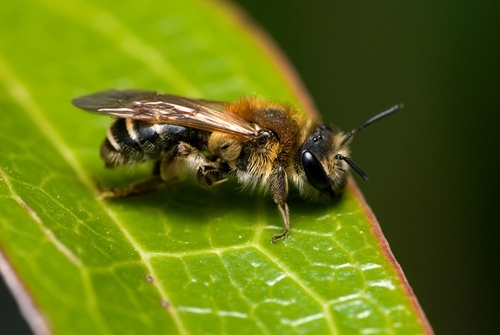Farming schemes could be doing more to help pollinators such as bees and hoverflies, according to a new international study led by researchers at Scotland’s Rural College (SRUC).
 Andrena dorsata (Photo credit: Will George)
Andrena dorsata (Photo credit: Will George)
The study, published in the Journal of Applied Ecology, is the work of 22 experts across 18 different European countries. They identified substantial opportunities to improve the quality of agri-environmental habitats by implementing pollinator-friendly management practices. These would not only increase the abundance of resources in a habitat, but also the range of resources.
Where intensive farming and the subsequent loss of flower-rich habitats has been blamed for declines in pollinator species, the study suggests how collaboration could be the answer. By connecting isolated areas of nature-rich farmland and implementing diverse field margins, farmers could improve the fate of these much-needed pollinators. Other recommendations include planting nitrogen-fixing crops for foraging, ensuring habitats provide floral resources across a wider period of time, and improving existing features for nesting, such as hedgerows and drystone walls.
Professor John Holland of the Game & Wildlife Conservation Trust (GWCT) notes: “Of all the available agri-environment scheme options, flower-rich habitats on farmland are one of the best, supporting not only pollinators but other beneficial invertebrates that can help control crop pests.”
The potential impact of even a marginal improvement in habitat should not be overlooked. More than 70 per cent of crops worldwide rely on insect pollinators, and previous studies show how pollinator-friendly management can also increase a number of other invertebrates, including natural predators.
Researchers evaluated how different options available within Ecological Focus Areas (EFAs) varied in their potential to support insect pollinators and how readily these options were used by farmers.
The findings of the study, which was funded under the Cost Action Super-B – Sustainable Pollination in Europe programme, will be used to inform the Common Agricultural Policy post-2020. The full paper is available to read under open access here.
Notes to editors
The Game & Wildlife Conservation Trust – providing research-led conservation for a thriving countryside. The GWCT is an independent wildlife conservation charity which has carried out scientific research into Britain’s game and wildlife since the 1930s. We advise farmers and landowners on improving wildlife habitats. We employ more than 60 post-doctoral scientists and other research staff with expertise in areas such as birds, insects, mammals, farming, fish and statistics. We undertake our own research as well as projects funded by contract and grant-aid from government and private bodies.
For information, contact:
Eleanor Williams
Telephone: 07592 025476
Email: press@gwct.org.uk